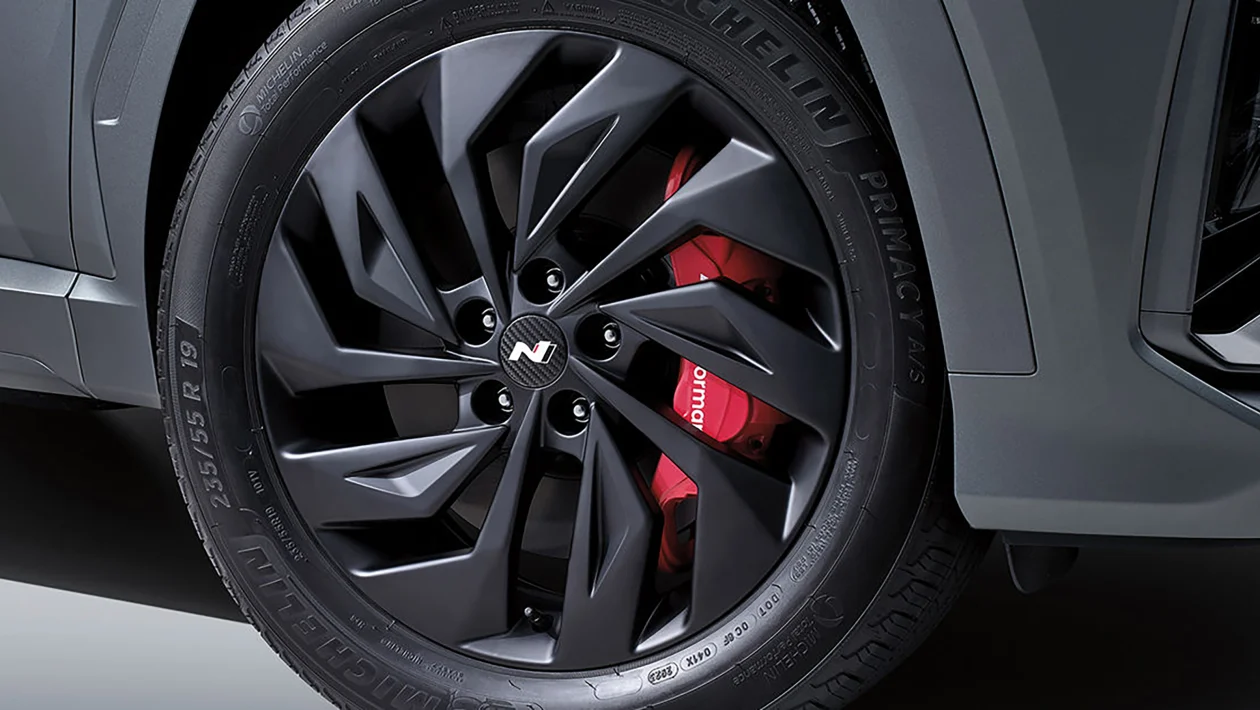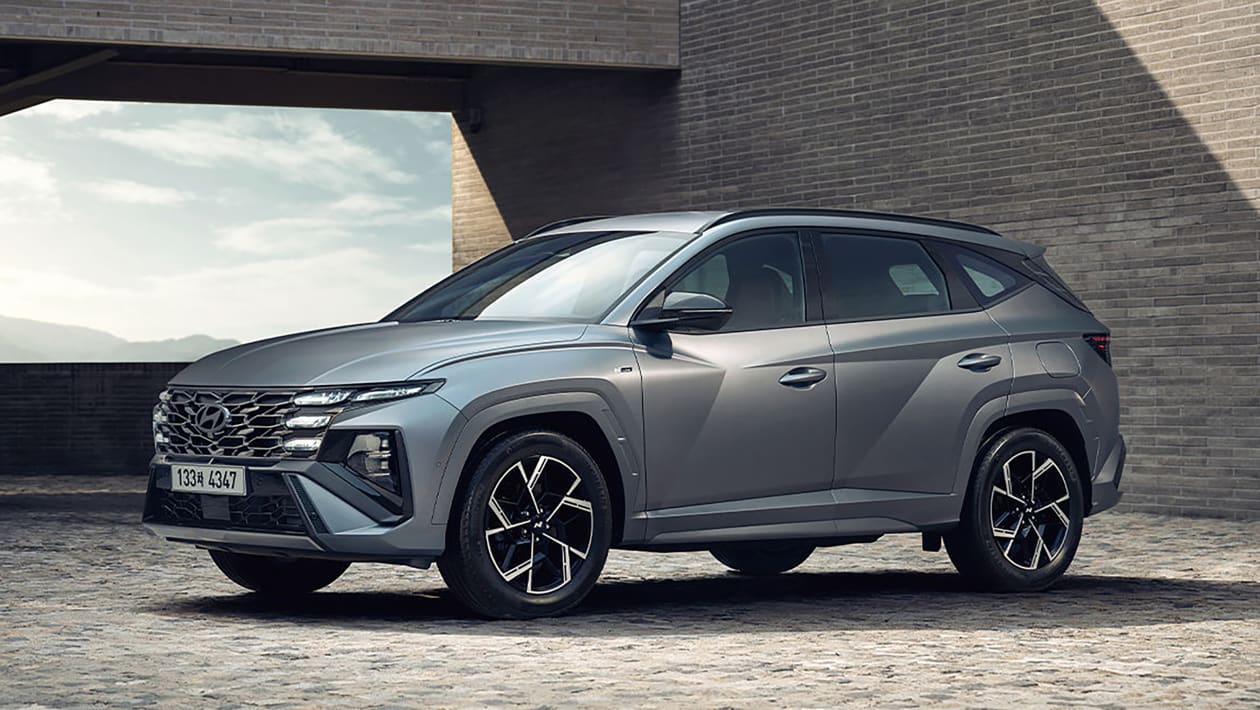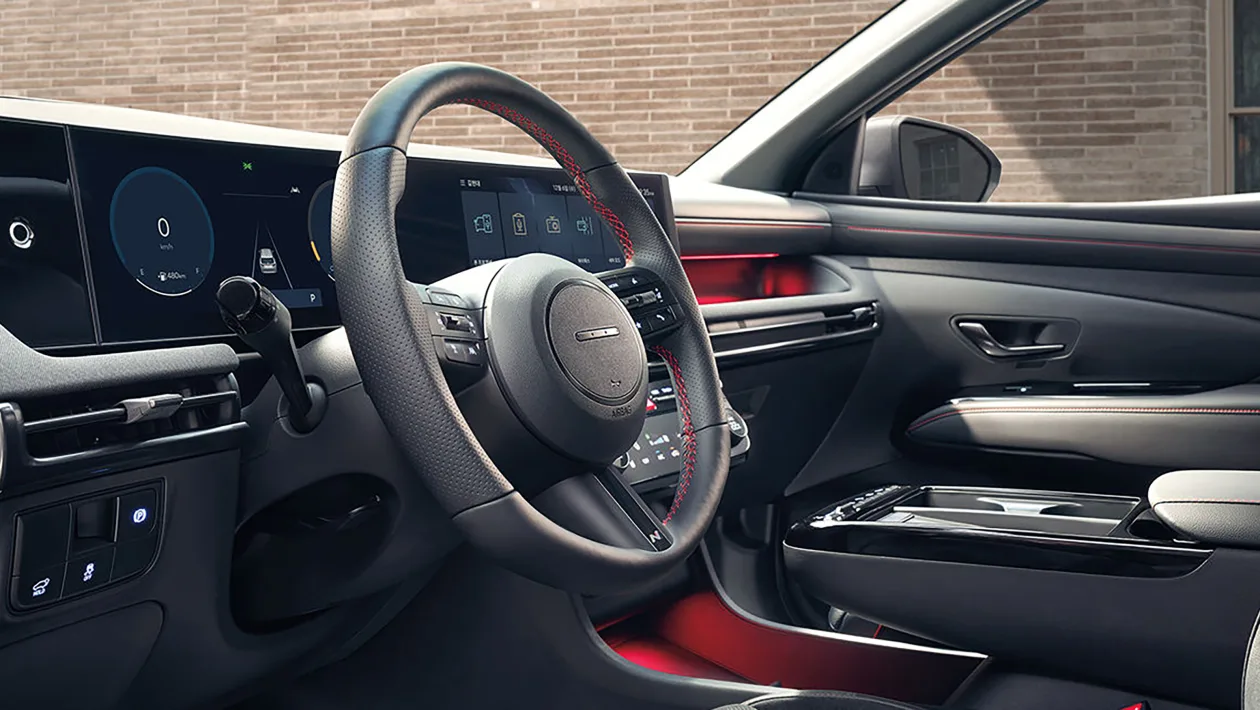The Hyundai Tucson is set to be even better from next year.
The current, fourth-generation Hyundai Tucson has been a leader in the family SUV segment since it arrived in 2020 and in 2024 it’ll gain a mid-life facelift – which has already been shown off on Hyundai’s Korean website.
Despite having many excellent rivals such as the Ford Escape, Toyota RAV4 and its Kia Sportage sibling to contend with, the Tucson has been a favourite of ours in recent years. Other rivals like the Peugeot 3008, Skoda Karoq and Honda CR-V have all been updated since the Hyundai launched, so competition for the Tucson is as tough as ever.
The exterior of the new Tucson has only been given a mild going over. Instead of taking on the blocky approach that’s been used for the new Santa Fe, the Tucson retains its existing “Parametric Dynamics” design language.
The distinctive “Jewel Hidden Lights” at the front have been tweaked, as have the grille and lower bumper – but overall it’s easily recognisable as a Tucson. The flanks feature wheelarch extensions in a contrasting grey colour on the standard car, although on the N Line these are painted in the body colour.
 The N Line also gets it’s own front bumper design, an exclusive grille and 19-inch alloy wheels with real carbon fibre centre caps, plus plenty of N Line badging all over. To the rear there are fins on the spoiler and the bumper has been modified too, the dual-exit exhaust tips are retained, however.
The N Line also gets it’s own front bumper design, an exclusive grille and 19-inch alloy wheels with real carbon fibre centre caps, plus plenty of N Line badging all over. To the rear there are fins on the spoiler and the bumper has been modified too, the dual-exit exhaust tips are retained, however.
Hyundai claims its interior changes bring a “harmonious blend of functionality and aesthetics.” The biggest difference here is the repositioning of the central touchscreen to be connected to the driver’s display – just as on the latest Kona. The steering wheel is also borrowed from the Tucson’s smaller sibling, with a new badge in the centre.
In a bid to make the Tucson’s fascia easier to use, Hyundai has ditched touch-sensitive haptic controls for dials for the temperature, and switches for more commonly used climate functions. The gear-selector buttons have been moved from the centre console, free up more storage space.
N Line models get red stitching on the suede upholstery, black inserts on the steering wheel and more N Line badges. Hyundai has also detailed some N Performance options, including bigger four-piston front brakes finished in red paint and 19-inch lightweight matte black wheels.
The Tucson sits on Hyundai-Kia’s N3 platform and this should mean we won’t see any changes to the powertrain offerings. We expect to see the current range of petrol, hybrid and plug-in hybrid powertrains carried over.





